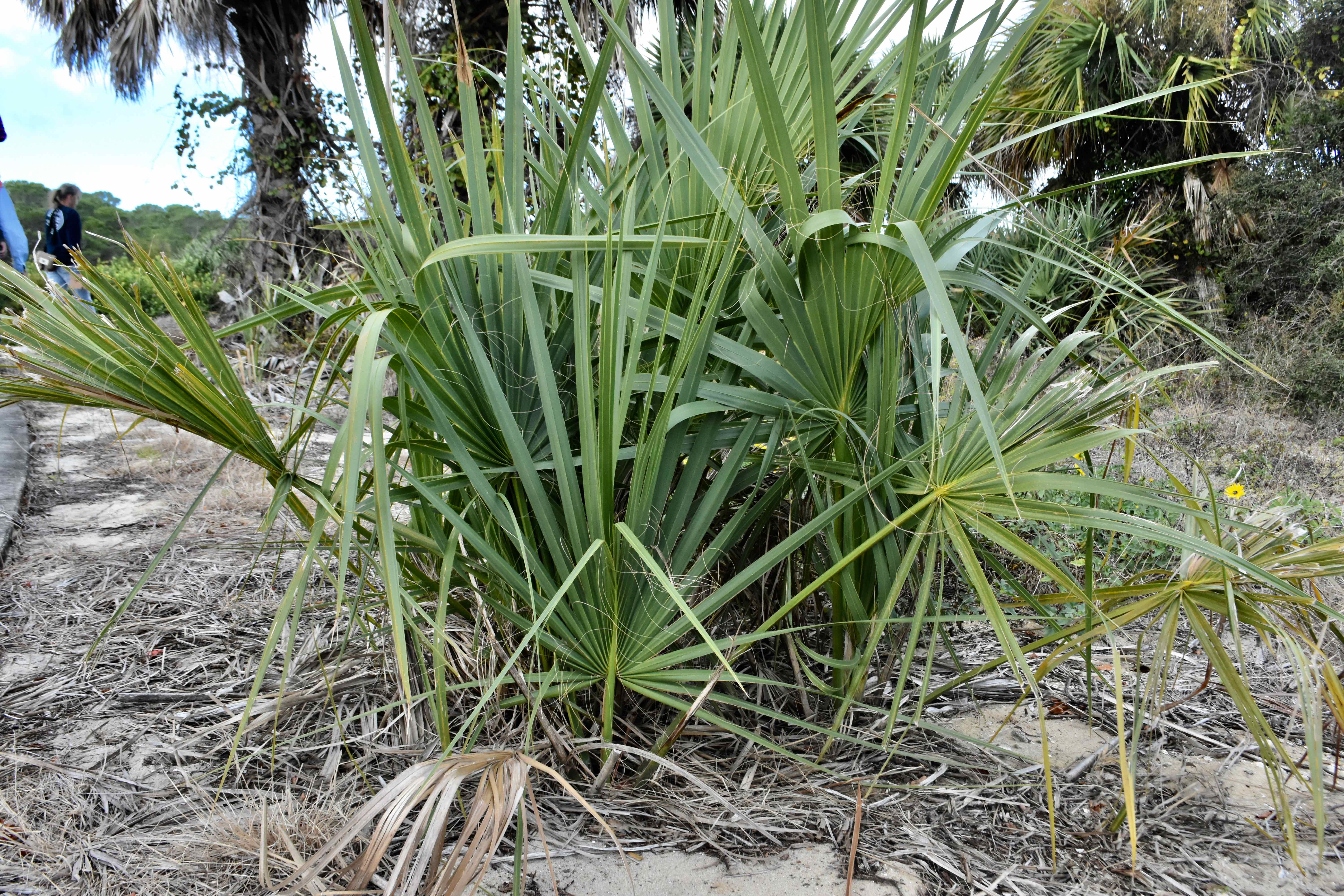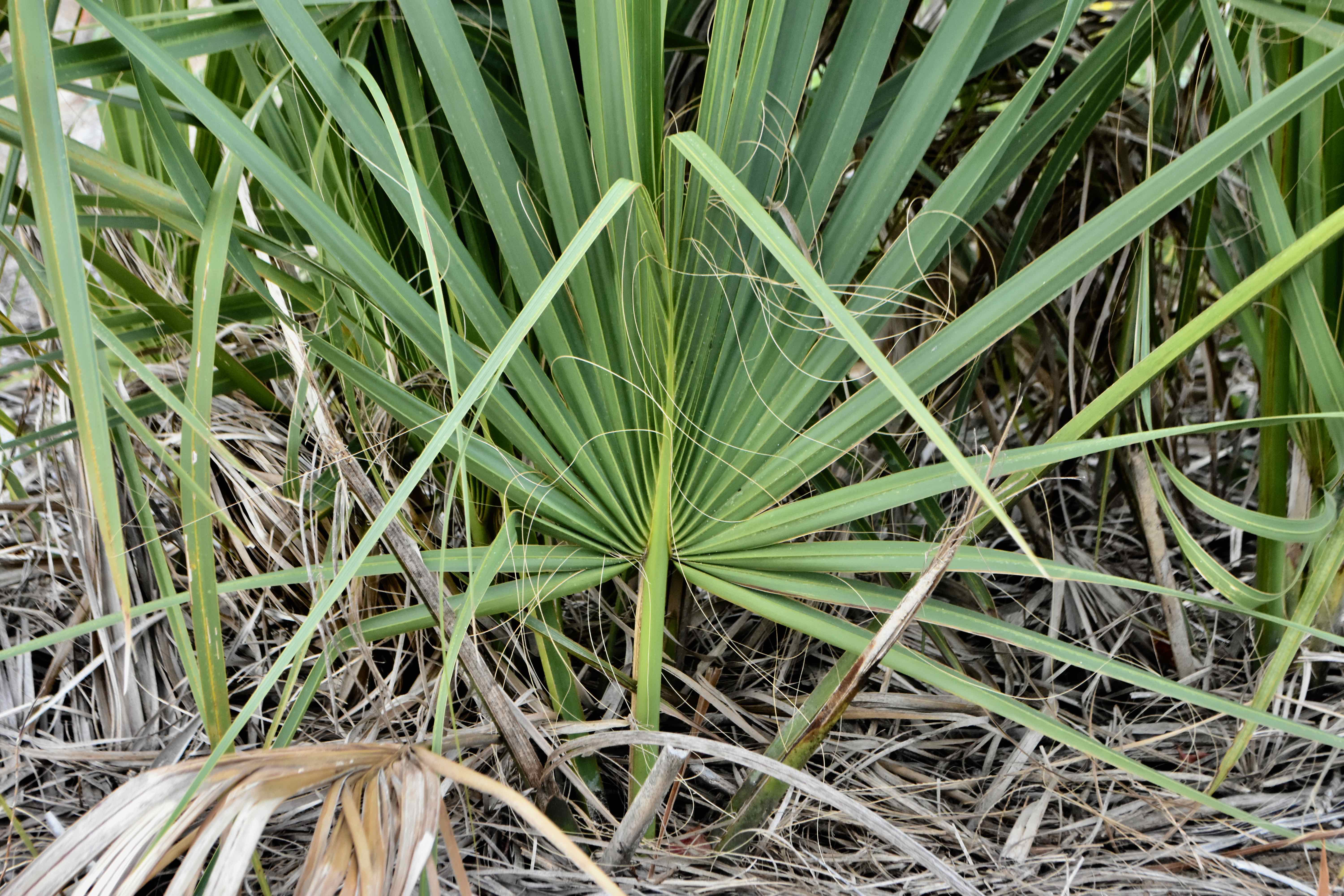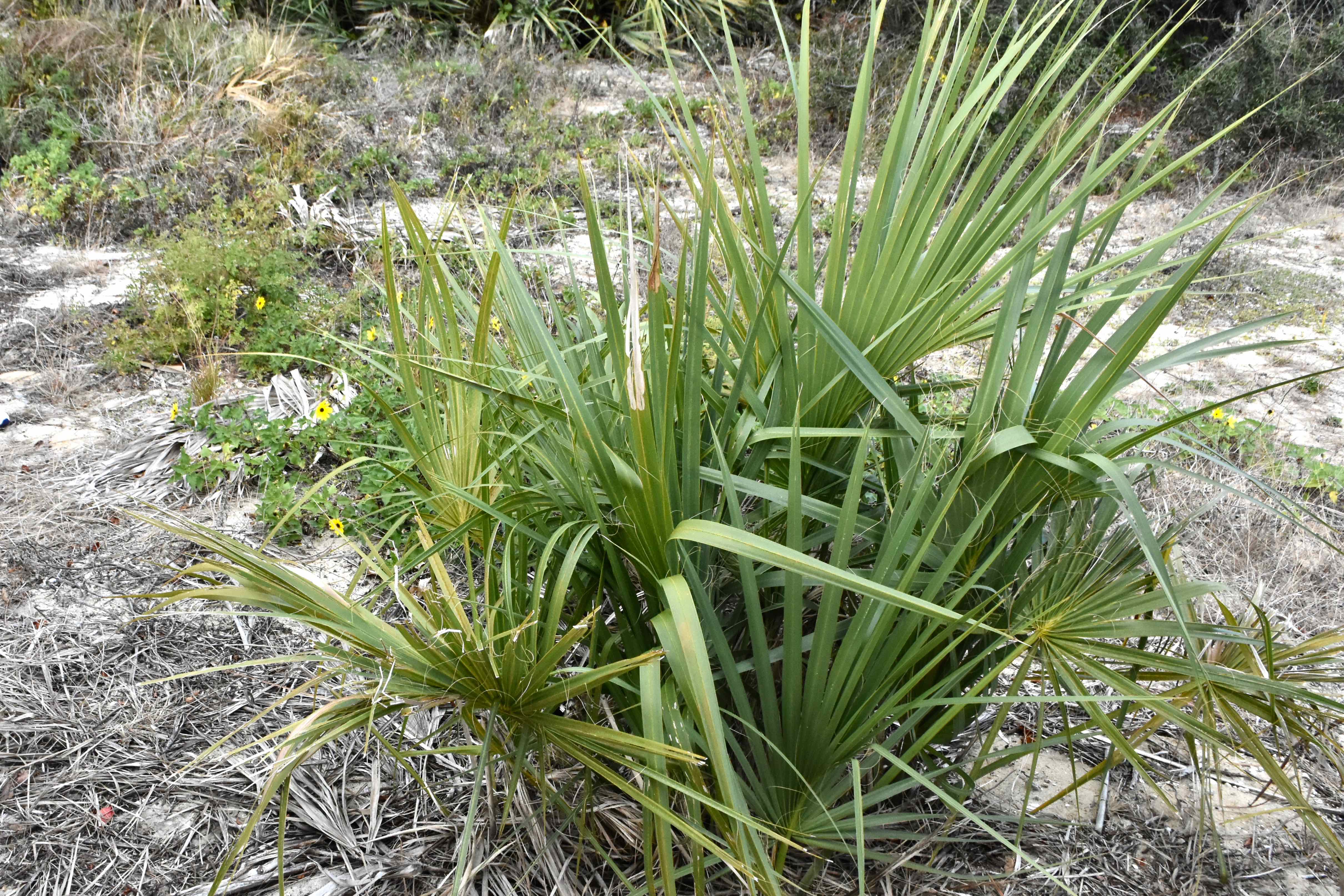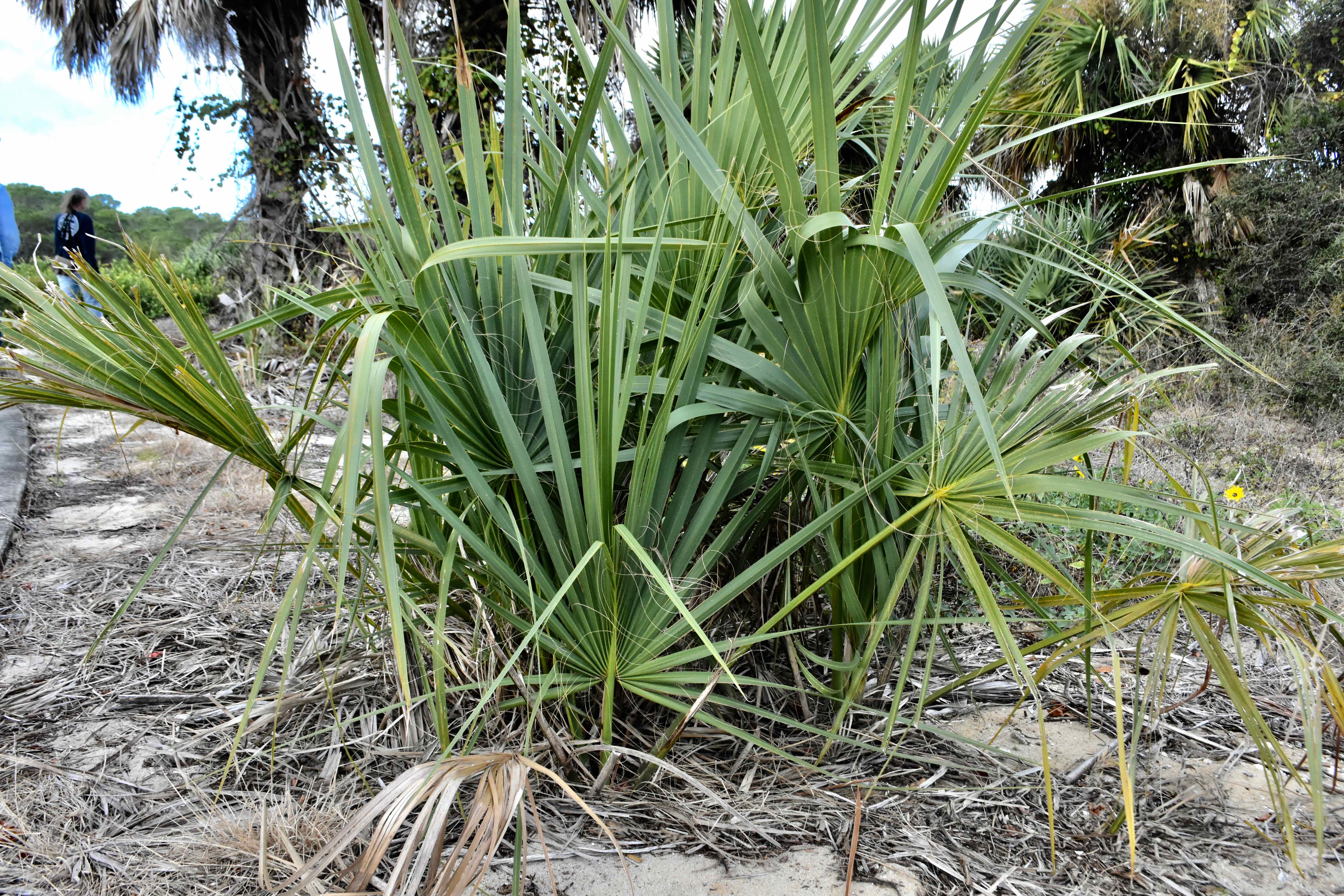
Scrub Palmetto, photographed at Jupiter Ridge Natural Area, Jupiter, Palm Beach County, in January 2019.
There are 11 species of palm native to Florida. There's the royal palm, tall, majestic and all too rare in the wild. There's the cabbage, or sabal palm, so widespread and so culturally and ecologically significant that it's become the state tree.
And then there's this guy, the scrub palmetto, Sabal etonia, the palm you probably never heard of. A larger measure of its anonimity comes down to the fact that you assume it's something else, something commonplace, a saw palmetto or a young cabbage, when you're actually looking at something fairly rare.
Look at it again. Notice the petiole, or leaf stem, lacks the rows of sharp teeth that puts the saw in saw palmetto. Look even closer. There's no obvious growth point, no trunk, like you would see with a cabbage palm. That's because with scrub palmettos, the growth point, is almost always underground. But there's one thing about the scrub palmetto that no other palm can claim: it's the only one found in Florida and nowhere else on the planet. And that fact, if nothing else, makes it worth getting to know.
Scrub palmettos are on the short, shrubby side, rising to perhaps six to eight feet. It has a single trunk, that usually, but not always, remains below ground. It typically has four to seven fan-shaped leaves, each with a long, narrow, triangularly shaped hastula — the point where leaflets radiate from the petiole (best seen in the photo at the bottom left).
The scrub palmetto also has a "shaggy" look from string-like fibers that extend between the leaflets. When the trunk extends above ground, scrub palmetto can reach eight feet tall. Scrub palmetto puts out dense spikes of cream-colored flowers called inflorescences each spring into summer. The flowers give way to blue-black berries that are food for birds and other animals. The flowers are also a source of nectar for pollinators. Scrub palmetto is a host for the monk skipper butterfly.
Scrub palmetto is cultivated and used as an accent plant in landscaping. It has a high tolerance for drought, as might be expected. It likes full sun but will take a little shade; it is not salt tolerant.
In South Florida, scrub palmetto grows in the white-sand scrubs and scrubby pinelands of the Atlantic coastal ridge from Volusia County as far south as Miami-Dade. It's also found in the Central Florida Ridge that extends northward from Lake Okeechobee to Clay County. The Institute for Regional Conservation considers scrub palmetto to be "imperiled" in South Florida. Of course, great swaths of what was coastal scrub is now buried under housing developments, strip malls and office buildings.
We've seen some references use the scientific name Sabal miamiensis, but Sabal palmetto is widely accepted. It is a member of Arecaceae, the palm family.
Click on photo for larger image
Links for Scrub Palmetto



